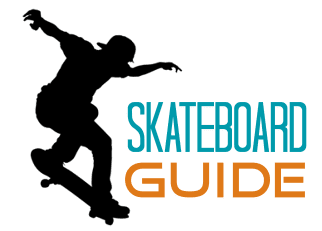Skateboarding is more than just a sport; it’s a culture, a lifestyle, and a passion. For enthusiasts, every component of their skateboard matters—each piece playing a crucial role in the performance, feel, and durability of the board. Whether you’re a beginner learning to ollie or a seasoned rider tackling technical tricks, knowing the ins and outs of skateboard parts can make a world of difference. In this guide, we’ll break down the key skateboard parts, their functions, and how to pick the best components for your ride.
1. Understanding the Skateboard Parts List: Components That Make Up Your Ride
To truly appreciate the art of skateboarding, it’s essential to understand the different parts that come together to form the board. Each part is designed for specific functions, contributing to the overall performance. Let’s dive into the core components of a skateboard, so you can assemble, maintain, and even upgrade your board for the ultimate skating experience.

Skateboard Deck: The Heart of Your Ride
The skateboard deck is the flat, wooden part of the board that you stand on. It’s the foundation of your skateboard, so it’s crucial to choose a deck that aligns with your skating style and preferences. Decks come in various shapes, sizes, and materials. The most common material used is Canadian maple, but there are also bamboo and fiberglass decks for those seeking different flexibilities or durability.
Key Features to Consider in a Skateboard Deck:
Shape
Skateboard decks come in several shapes, such as popsicle, cruiser, and longboard, each offering different riding experiences.
Width
The width of the deck affects how the skateboard feels underfoot. Wider decks offer stability, while narrower ones provide agility and precision.
Concave
The concave refers to the curvature of the deck. A deeper concave gives more control, especially for tricks, while a flatter deck offers comfort for cruising.
When choosing the best skateboard deck, consider factors such as your skateboarding style (street, vert, longboarding) and personal preferences for stability, comfort, and trick performance.
Trucks: The Steering Mechanism
Trucks are the metal components that attach the wheels to the deck. They are essentially the steering mechanism of the skateboard, allowing you to turn and carve. The trucks come in two main parts: the baseplate (which attaches to the deck) and the hanger (which holds the axle and connects to the wheels).
Things to Keep in Mind When Choosing Skateboard Trucks:
Width
The width of your trucks should match the width of your deck for optimal performance. Too narrow or too wide trucks can impact your control and comfort.
Height
Trucks come in low, medium, and high heights. Low trucks are ideal for technical tricks, as they offer more stability. High trucks, on the other hand, are better for cruising and provide more clearance for larger wheels.
Material
The most common material for trucks is aluminum, which offers strength and durability, but some advanced models use lightweight alloys for improved performance.
Trucks play a vital role in how your skateboard feels when turning, carving, or landing tricks. If you’re into technical tricks, opt for low trucks, while if you’re more of a downhill or cruising skater, high trucks might suit your needs better.
Wheels: Your Connection to the Ground
Wheels are the point of contact between you and the terrain. The size, hardness, and material of your wheels significantly impact your ride. Skateboard wheels are typically made of urethane, known for its durability and smooth ride, but the specific type you choose depends on your skating style.
Factors to Consider When Picking Skateboard Wheels:
Hardness
The hardness of the wheel affects the smoothness of the ride. Softer wheels (78A–87A) are ideal for rough terrains and provide a smoother ride, while harder wheels (88A–101A) are perfect for street skating, offering more control and faster speeds.
Size
Smaller wheels (48mm–52mm) are great for technical tricks, while larger wheels (54mm–60mm) are better for cruising and downhill riding.
Shape
Wheels come in different shapes, including square-edged, round-edged, and conical. Square-edged wheels provide more grip, while round-edged wheels offer a smoother slide.
The right skateboard wheels depend on your preferred style of riding and the type of terrain you’ll be skating on. So, whether you’re looking for street tricks or a smooth downhill ride, make sure to select wheels that enhance your performance.
2. Best Skateboard Decks: Finding the Right Fit for Your Ride
The skateboard deck is arguably the most important part of the board because it directly impacts your riding experience. When choosing the best skateboard deck, you should consider your skating style, personal preferences, and the specific feel you’re going for. Below, we’ll explore the best skateboard decks available, from wide skateboard decks to custom options.
Why Choose a Wide Deck?
-
- Greater stability for cruising and downhill riding.
- Better foot placement for larger riders.
- More comfortable for beginners still getting used to the feel of a skateboard.
Why Choose a Narrow Deck?
-
- Enhanced maneuverability for technical tricks.
- Better for street skating and park use.
- Lighter and more agile, allowing for quick flips and spins.
Why Choose a Custom Deck?
-
- Personalization of graphics, shape, and size.
- Tailored to your specific riding style and preferences.
- A unique look that sets your skateboard apart from others.
When choosing the best skateboard deck, think about your style of skating—whether it’s street, park, downhill, or cruising—and select a deck that complements that style. Your deck should feel comfortable and responsive to your movements, enhancing your overall ride.

Popular Deck Brands to Consider:
Element Skateboards
Known for their durable, lightweight decks, Element offers a variety of shapes and sizes for all types of skaters.
Santa Cruz Skateboards
A classic brand that combines iconic graphics with high-quality materials, perfect for both beginners and professionals.
Almost Skateboards
Offers a range of decks, from wide to narrow, made with advanced materials for ultimate performance.
3. Choosing the Right Parts for Your Skating Style
As you build or upgrade your skateboard, it’s essential to consider how each part complements your skating style. Whether you’re a street skater, downhill rider, or vert enthusiast, the right combination of skateboard parts will make all the difference. A proper setup ensures comfort, safety, and top-notch performance, helping you progress and enjoy the ride.
Conclusion
Skateboarding is all about personal preference, and understanding the components that make up your skateboard is the first step to improving your skills and having more fun on your board. By carefully selecting the right skateboard parts, from the deck to the wheels, you’ll ensure that your skateboard not only looks good but performs to the highest standard. Remember, a well-built skateboard is your key to mastering tricks, carving smoothly, or simply enjoying a relaxing ride down the street.
Whether you’re searching for the best skateboard decks or deciding which trucks and wheels to choose, we hope this guide helps you assemble the perfect setup for your skateboarding journey.






